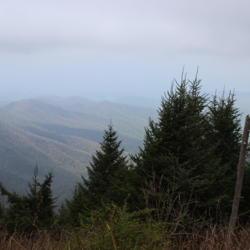Posted by
ILPARW (southeast Pennsylvania - Zone 6b) on Nov 11, 2017 10:25 AM concerning plant:
The Frasier Fir or Southern Balsam Fir is native to the Appalachian Mountains of West Virginia, North Carolina, and Tennessee at altitudes of 3,000 to 6,000 feet. In the last few decades it has been used as the most common Christmas tree, being grown in tree farms a lot in the northern US and the Appalachian region. It infrequently is used as a landscape tree in the northern USA. It is more heat and drought tolerant than the very similar Balsam Fir. Its blunt, soft needles, to 1 inch long, crowd the twigs more than Balsam Fir, but don't have the strong balsam scent. Its 1.5 to 2.5 inch long cones have definite bracts that bend down and are longer than the scales. There is a Balsam Woolly Adelgid insect from Europe that has been killing off a lot of trees in the Appalachians.

















